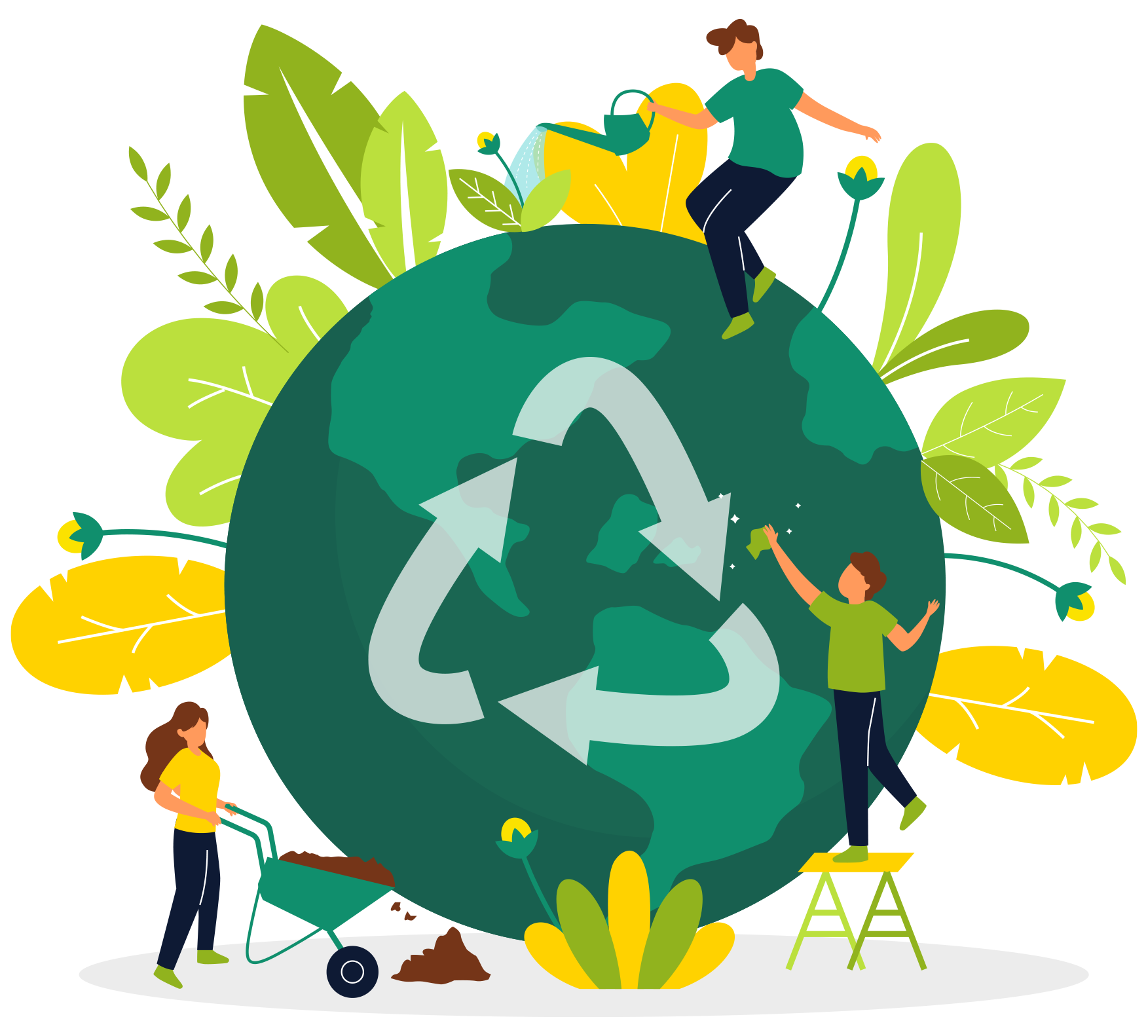
Why Recycling Holds The Future?
Sustainability, the way to be!
Sustainability, the smart way!!
Sustainability, the lifestyle!!!
Being sustainable holds the future as the future of future generations hinges on sustainability. We need to start caring for the well-being of planet earth as going by a native American Proverb:
“We do not inherit the Earth from our ancestors; we borrow it from our children.”
Why am I quoting this? To begin with, my love affair with the environment started nearly a decade ago, when in my office I was assigned the responsibility of planting trees in lesser green belts of Mumbai. Mumbai, being a cosmopolitan and near concrete jungle, posed a threat of providing a clean, green living to its citizens. This is when this step was taken. My frequent interactions with rewarded, awarded, and noted environmentalist, Mr. Shubhajit Mukherjee opened many avenues on the subject. How our consciousness can save the planet earth for future generations? Since then, I have been actively associated with the cause.

Besides, planting trees, investing in rainwater harvesting, and recycling is another aspect that is most critical for preventing the earth from getting polluted. Now, it was time to study some more about recycling which was being talked about globally. My interest in recycling grew and I researched some more…
… The environmental policies laid out by the governments in many countries show us that recycling is set to continue increasing in volume and scale over the next quarter of a century. Beyond that, if targets are reached, recycling could become one of the most established industries around.
So, why is recycling the only way to save the planet Earth for future generations?
Recycling reduces the need for raw materials so that the rainforests can be preserved. Huge amounts of energy are used when making products from raw materials. Recycling requires much less energy and therefore helps to preserve natural resources.
What are the benefits of recycling?
- Recycling reduces waste sent to landfills and incinerators.
- Recycling prevents pollution.
- Recycling conserves natural resources.
- Recycling conserves energy.
- Recycling creates jobs, producing economic benefits.
It reduces the amount of waste produced by us. Conserves natural resources such as water, wood, and minerals. It prevents the overuse of resources and helps in preserving them. In addition, it saves energy.
When we talk about paper, it is the most used material on earth. Paper is made up of two materials water and wood. For recycling paper, firstly, they break it down into small pieces and dissolve it in water. After that, they add chemicals that filter out the ink and dirt from it. In addition, after filtering the paper takes the form of a mush called pulp and this pulp is later converted into clean paper.
Recycling helps to keep non-biodegradable materials like certain plastic, which can take up to 1,000 years to decompose, out of the landfill. When these products are dumped in landfill, they can pollute natural habitats and kill wildlife. Additionally, it keeps toxic substances like mercury and led out of the landfill, where they can have a destructive effect on their surroundings. These sorts of substances are found in plenty of everyday items, including fluorescent lighting, electronic devices, and batteries, so it’s important to check what can be recycled before tossing it in the bin.
Recycling also gives old non-renewable materials a second lease on life when they are used in new products. Resources like steel, aluminium, copper, and mercury can be reused when they are recycled properly, reducing the need to mine more of these minerals out of the ground.
Reusing old resources also caps the future cost of non-renewable materials.
- Bienu Varma Vaghela
Writer & Environment Enthusiast